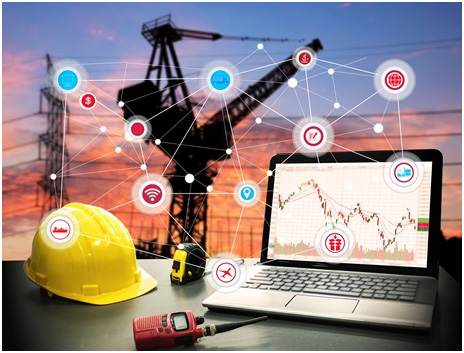Smart Construction Sites: Navigating the World of IoT and Sensors
The construction industry is undergoing a rapid transformation, thanks to the integration of cutting-edge technologies that are revolutionising the way projects are planned, executed, and monitored. One such technology that plays a pivotal role in creating intelligent construction sites is the Internet of Things (IoT) and sensors. This blog delves into the diverse applications of IoT and sensors in construction, with a particular emphasis on their significant contribution to Health, Safety, and Environment (HSE) practices.
1. Real-Time Safety Monitoring with Wearables and Sensors
The IoT has revolutionised the real-time safety monitoring of construction sites by enabling wearable devices embedded with sensors to collect crucial data, including workers’ vital signs and environmental conditions. This information is transmitted in real-time to a central system, which allows for immediate response to potential safety risks. IoT-enabled wearables have enhanced HSE practices by providing actionable insights and promoting a proactive approach to safety. From monitoring workers’ fatigue levels to detecting hazardous gases, these devices offer a comprehensive real-time safety monitoring system that can prevent accidents and injuries, ensuring a secure working environment.
2. Smart PPE for Enhanced Worker Safety
The integration of IoT technology has given rise to a new form of Personal Protective Equipment (PPE) that extends beyond the traditional gear. Equipped with sensors, smart helmets, vests, and boots provide more than just physical protection, offering an additional layer of awareness to workers. These intelligent wearables are capable of detecting and alerting workers to potential dangers, such as proximity to heavy machinery or hazardous environmental conditions, thereby contributing to accident prevention and ensuring a safer working environment. By incorporating IoT technology, smart PPE has revolutionised the conventional perception of protective gear, making it an indispensable tool for businesses looking to provide their workers with the highest level of safety.
3. Environmental Monitoring for Sustainable Construction
Construction sites impact the environment in their proximity significantly. Nonetheless, IoT-enabled environmental monitoring systems present an innovative solution for alleviating the effects of construction on the environment. Real-time sensors can measure multiple ecological parameters such as air quality, noise levels, and dust particles, providing valuable data for managing environmental impact. By doing this, construction sites can not only ensure compliance with environmental regulations but also promote sustainable construction practices. Smart construction sites, equipped with environmental sensors, actively contribute to minimising their ecological footprint and fostering a healthier environment for both workers and the community. Ultimately, the use of these technologies can lead to a more sustainable future for the construction industry while promoting the health and safety of the local environment and its inhabitants.
4. Connected Machinery and Equipment
The proliferation of the IoT has led to its application in the construction industry, particularly in the area of machinery and equipment. This has resulted in a more efficacious and secure working environment. The integration of smart sensors in heavy machinery allows for real-time diagnostics, predicting potential breakdowns and averting equipment failure. This proactive maintenance approach not only minimises downtime but also enhances productivity. Moreover, it significantly mitigates the risk of accidents associated with equipment malfunctions, which could potentially result in injuries or fatalities.
5. Data-Driven Decision-Making for Improved Safety Protocols
The advent of IoT devices and sensors has significantly enhanced the efficacy of safety measures in construction sites. The voluminous data generated by these devices provides valuable insights to decision-makers, enabling them to implement informed safety protocols. By scrutinising the trends and patterns in this data, construction companies can proactively identify potential hazards, implement preventive measures, and continuously improve safety standards. The ability to make data-driven decisions ensures a dynamic and adaptive approach to HSE, thereby creating a safer and more resilient construction environment.
Conclusion
The advent of smart construction sites, powered by IoT and sensor technologies, has brought forth a new era of enhanced safety, efficiency, and sustainability in the construction industry. The adoption of these technological innovations is not merely a means of progression; it serves as a firm commitment toward elevating the implementation of HSE practices, and ensuring the well-being of the construction workforce. As we navigate through the world of IoT and sensors, it is evident that the future of construction lies in smart, connected sites that prioritise safety and environmental responsibility.



